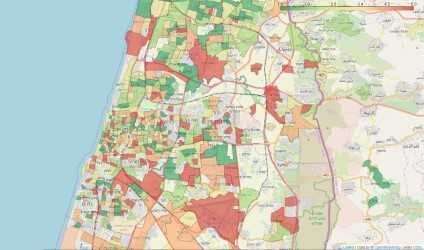Method to focus efforts where COVID-19 outbreak is anticipated and relieve measures taken in others

A method for monitoring, identifying, and predicting where the coronavirus will spread has attracted considerable international interest. It was initiated and developed by scientists from the Weizmann Institute of Science, in collaboration with researchers from the Hebrew University of Jerusalem and Clalit Health Services and in coordination with Israel's Ministry of Health. Other governments have now begun to implement the method, which is based on questionnaires for the general public and analysis of the data obtained from them. The questionnaires track the development of virus-induced symptoms, and the analysis relies on Big Data algorithms and artificial intelligence. Viral spread occurs in clusters of infection; thus, early identification of clusters may facilitate various actions aimed at slowing down the spread of the virus.
A pilot project, launched in Israel about one week ago by the Institute's Profs. Eran Segal and Benjamin Geiger, along with Prof. Yuval Dor from the Hebrew University, has received remarkable public response, with some 60,000 Israelis filling out the questionnaires to date. Preliminary data analysis led the scientists to detect a significant increase in symptoms reported by the public in areas where verified patients are known to have visited. This accurate, neighborhood-level mapping may enable the health authorities to concentrate on areas where an outbreak and spread of the virus is predicted—while allowing them to ease measures in areas where an outbreak is not expected.
"These questionnaires are the only tool that can present a general picture of the virus's outbreak across the country. It is important to note that they are not intended to replace the efforts of increasing the number of tests to identify patients and carriers," says Prof. Segal. "However, tests can never cover the entire population—due to both logistic and economic constraints. We believe that our method may provide the Ministry of Health with a strategic tool for tackling the crisis."
Together with Prof. Ran Balicer of the Clalit Research Institute and other researchers, the scientists have continued developing the method, and recently published an article on the MedRxiv site about it, calling on other countries to implement the technique. Numerous countries, including the U.S., India, Luxembourg, Malaysia, Spain, Germany, Italy, and Britain, have started adopting the questionnaire method.
The scientists are currently working to establish a global forum, led by Prof. Segal and researchers from the U.S., with the goal of sharing data and insights and building prediction and comparison tools together.
Click here to view the questionnaire.
It should be noted that the questionnaire does not diagnose coronavirus infection. In addition, the questionnaire is anonymous and all data will be used only for the purpose of monitoring the spread of the virus. The scientists are taking all possible means to maintain respondents' privacy and information security.
More information: Hagai Rossman et al. A framework for identifying regional outbreak and spread of COVID-19 from one-minute population-wide surveys, MedRxiv (2020). DOI: 10.1101/2020.03.19.20038844
















